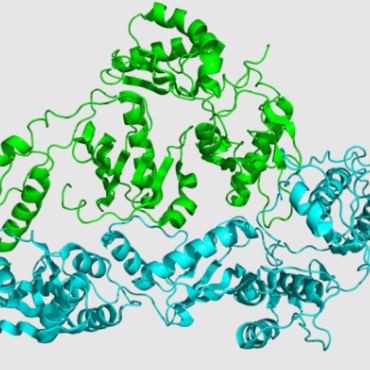Introduction to the RT-PCR technology
What is RT-PCR?
RT-PCR (Reverse Transcription-Polymerase Chain Reaction) is a technology that combines reverse transcription (RT) of RNA and polymerase chain amplification (PCR) of cDNA. First, cDNA is synthesized from RNA by the action of reverse transcriptase, and then cDNA is used as a template to amplify and synthesize the target fragment under the action of DNA polymerase.
What are the operating steps of RT-PCR?
1. Synthesize the first strand of cDNA from RNA (or mRNA) by reverse transcription:
2. Heating at 95°C for 5-10min to inactivate reverse transcriptase, denature the RNA-cDNA hybrid, and then rapidly cool in an ice bath:
3. PCR amplification: The method is basically the same as PCR.
cDNA first-strand synthesis method: 20ul reaction solution contains 10x PCR amplification buffer, 2ul; four dNTPs (10 mmol/L) 2ul; RNase inhibitor 20U; mRNA, 1 ~ 2ug (or RNA 5-10ug); AMV, 20U; primer, 1u; and finally makeup to 20ul with sterilized water. After the above solutions were thoroughly mixed, the reaction was performed at 42°C for 60 minutes. After the reaction, the tube was heated at 95°C for 5 minutes to inactivate the reverse transcriptase and denature the RNA-cDNA hybrid. Afterward, the reaction solution can be stored at -20°C for later use.
Precautions during RT-PCR:
1. Primers for synthesizing cDNA: When synthesizing cDNA primers, random hexanucleotide primers are usually used to guide the efficient synthesis of first-strand cDNA from RNA effectively:
2. Avoid RNase contamination: RNase inhibitors should be used when synthesizing the first strand of cDNA. When performing RT-PCR, the RNA used to synthesize the first strand of cDNA will not affect the PCR, so it is not necessary to use alkali. or RNase treatment;
3. Reverse transcriptases from different sources can be used to synthesize first-strand cDNA, but the reaction temperature of reverse transcriptases from different sources is different. For example, both the avian ameloblastoma virus (AMV) and the murine leukemia virus Molina strain (Mo-MLV) can be used to synthesize the first-strand cDNA. AMV requires a reverse transcription temperature of 42 °C, while Mo-MLV 37 °C is required. Relatively speaking, Mo-MLV is more suitable for RT-PCR, but because its optimal temperature is 37 °C, which is lower than the 42 °C of AMV, it may be used for RNA templates with higher secondary structure. will have adverse effects.

Application of RT-PCR Technology
RT-PCR technology is sensitive and versatile, and can be used to detect gene expression levels in cells, the content of RNA viruses in cells, and directly clone cDNA sequences of specific genes. The RNA used as the template can be total RNA, mRNA, or an in vitro transcribed RNA product. Regardless of the RNA used, it is critical to ensure that the RNA is free of RNase and genomic DNA contamination. Total RNA in tissues or cells is extracted, and mRNA is used as a template to reverse transcribed into cDNA using Oligo (dT) or random primers and reverse transcriptase. Then use cDNA as a template for PCR amplification to obtain the target gene or detect gene expression.
Professional manufacturer of Nucleic Acid (DNA & RNA) Extraction and Analysis products supplier
GENETURE is a group company,we own two factories: Ascend and Dianrun,to provide one stop solution of Nucleic Acid Extraction and Analysis,including solution for COVID-19. Geneture provides high quality and professional Nucleic Acid Extraction Reagents, Lab consumables, Real-time PCR consumables and test machines.
GENETURE main products including: Nucleic acid extraction or purification kit,Automatic nucleic acid extractor, PCR system, PCR kit, Magnetic beads, and lab consumables of 96 well deep plate,Magnetic rod comb,PCR tube,PCR plate,Pipette tips,centrifuge tubes.
If you have any questions about RT-PCR or reverse transcription (RT), feel free to contact us.
Email: info@geneture.com
Mobile: +86 150 1002 8687
